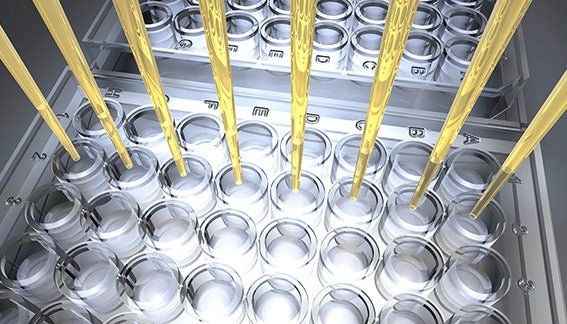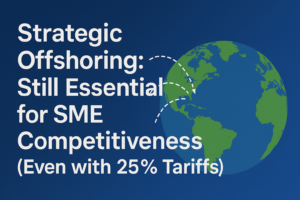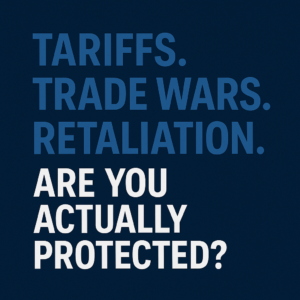
Executive Summary
In the highly competitive medical device market, reducing costs while maintaining high quality is essential for companies producing fully automated ELISA and chemiluminescence microplate instruments. This white paper explores how engaging a Design for Manufacturing (DFM) specialty engineering company, combined with a fully managed offshore manufacturing strategy in non-tariff countries such as Vietnam and India, can significantly reduce costs, enhance quality, and boost overall business efficiency. We will focus on refining product design for manufacturability, material science, logistics, and inspection while making a strong business case for offshoring select SKUs.
Introduction
Fully automated ELISA and chemiluminescence microplate instruments are critical tools in clinical diagnostics and life sciences. Market demand for these instruments continues to grow, driven by advancements in healthcare diagnostics and personalized medicine. However, medical device manufacturers face intense pressure to reduce costs without sacrificing quality or compliance with stringent regulatory requirements.
This white paper outlines how optimizing product design through DFM principles and leveraging offshore manufacturing partnerships can help companies achieve substantial cost reductions and quality improvements.
Design for Manufacturing (DFM) and Quality Engineering: Core Principles and Benefits
Overview of DFM
Design for Manufacturing (DFM) focuses on optimizing product designs for ease of manufacturing, leading to significant cost savings, improved reliability, and reduced warranty costs. This process incorporates:
- Material Science Optimization: Selecting materials that balance performance, cost, and manufacturability.
- Design for Logistics: Simplifying supply chain management and reducing lead times.
- Design for Inspection: Enhancing product reliability by incorporating inspection-friendly features.
Financial and Operational Impact
- Reduction in Cost of Goods Sold (COGS): Effective DFM strategies streamline manufacturing processes, reducing labor, material waste, and production errors.
- Improved Reliability and Quality: Design improvements reduce field failures and warranty claims, protecting the company’s reputation.
- Enhanced Inspection Protocols: Automated testing and inspection processes improve first-pass yield and reduce rework.
Case Study: A global manufacturer of diagnostic devices partnered with a DFM engineering firm, reducing COGS by 25% and improving product reliability by 15% through optimized material selection and simplified assembly processes.
Business Case for Offshore Manufacturing
Why Offshore Manufacturing?
Offshore manufacturing in non-tariff countries such as Vietnam and India provides several compelling benefits:
- Labor Cost Savings: Labor costs in these countries are significantly lower than in North America or Europe.
- Access to Advanced Manufacturing Facilities: Many offshore facilities offer state-of-the-art automation and robotics, ensuring high-quality production.
- Scalable Production Capacity: Offshore partners can quickly scale production to meet growing demand.
Selection Criteria for Offshoring SKUs
When selecting SKUs for offshoring, it is crucial to prioritize volume over complexity. High-volume, less complex subassemblies are ideal candidates for offshore manufacturing. Examples include:
- Injection-molded plastic housings
- Circuit board assemblies
- Mechanical subassemblies
Key Considerations:
- Cost-Benefit Analysis: Weigh the potential cost savings against logistics and lead time implications.
- Quality Requirements: Ensure offshore partners meet necessary regulatory standards and quality certifications, such as ISO 13485.
Supply Chain and Logistics Optimization
Design for Logistics
Designing products with logistics in mind ensures efficient shipping, handling, and inventory management. This reduces lead times and improves overall supply chain performance.
Strategies for Success:
- Consolidate shipments to reduce transportation costs.
- Work with local suppliers in Vietnam and India to shorten the supply chain.
- Implement just-in-time inventory practices.
Risk Management: While geopolitical risks and natural disasters can impact offshore manufacturing, a diversified supply chain strategy mitigates these risks. Partnering with multiple manufacturing facilities in different regions ensures business continuity.
Quality Control and Certification Standards
Quality is a critical concern in medical device manufacturing. Offshore partners in Vietnam and India have made significant investments in quality systems and certifications.
Key Certifications:
- ISO 13485: Quality management systems for medical devices.
- ISO 9001: General quality management systems.
- CE Marking: Compliance with European health, safety, and environmental protection standards.
Enhanced Quality Processes:
- Automated inspection systems.
- In-line testing to catch defects early.
- Traceability systems to monitor each component’s journey through the supply chain.
Technology Transfer and Intellectual Property Protection
Offshoring often raises concerns about intellectual property (IP) protection. Working with reputable contract manufacturers (CMs) mitigates these risks.
Strategies for Protecting IP:
- Non-Disclosure Agreements (NDAs): Ensure all parties involved sign robust NDAs.
- Geographic IP Segmentation: Divide production across multiple locations to prevent IP theft.
- Regular Audits: Conduct regular audits of manufacturing partners to ensure compliance.
Case Study: A leading medical device company successfully transferred technology to a Vietnamese manufacturer, reducing production costs by 30% while maintaining strict IP controls.
Conclusion and Recommendations
Engaging a DFM specialty engineering company and leveraging fully managed offshore manufacturing can deliver substantial financial, technological, and quality benefits for manufacturers of automated ELISA and chemiluminescence microplate instruments. Key steps to success include:
- Partnering with experienced DFM firms to optimize product design.
- Selecting the right SKUs for offshore production, focusing on high-volume, low-complexity components.
- Choosing reputable manufacturing partners in non-tariff countries like Vietnam and India.
By adopting this strategy, companies can achieve significant cost savings, improve product quality, and gain a competitive edge in the global market.
References and Bibliography
- International Organization for Standardization. “ISO 13485: Medical Devices – Quality Management Systems.”
- Frost & Sullivan. “Global Medical Device Market Report.”
- Deloitte. “Supply Chain Optimization for Medical Devices.”
- Case studies from industry publications (to be expanded upon as the white paper is finalized).
- McKinsey & Company. “Global Manufacturing Trends.”
#DFM #MedicalDeviceManufacturing #OffshoreManufacturing #ELISAInstruments #CostReduction #VietnamManufacturing #IndiaManufacturing #ISO13485 #SupplyChainOptimization #DesignForLogistics #DesignForInspection #MaterialScience #TechnologyTransfer #AutomationInManufacturing #NonTariffCountries #GlobalManufacturing #COGSReduction #MedicalDeviceQuality #InspectionProcesses
#QualityControl #VietnamManufacturing #Manufacturing2024 #OffshoreManufacturing #REDUxEngineering #QualityAssurance #ManufacturingTips #TechInManufacturing #AuditProcess #InspectionProcess






